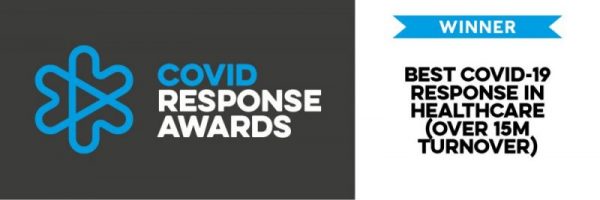Introduction
The Advanced Lower Limb Rehabilitation Class aims to help you recover from your lower limb injury or surgery and to show you how to get your joint movement, muscle power, flexibility and balance back. We want to support you to achieve your goals and return to your normal levels of activity. Having looked at the difficulties and / or pain you are experiencing, we are offering you this as the best and quickest way to make a full recovery.
What to expect
This is a physical, progressive exercise rehabilitation group. The group usually consists of up to 12 people, who are at varying stages of recovery for a variety of problems. The therapist will confirm some details with you at the start of the class and provide you with information on what to expect. You will be monitored and guided through the exercises and with time you will become familiar and more confident. We would like you to attend 4 regular sessions and it is important to practice these exercises at home in between sessions and once your treatment has finished.
What will I need?
- Wear loose fitting clothing that is comfortable to move in
- Wear supportive footwear such as trainers
- You may wish to bring a drink
Read our FAQs for more information about our classes and what to expect.
Self-help exercises
Try to find 5-10 minutes in your daily routine to complete some of these exercises, choosing 3-4 different ones each time to practice.
To make progress with your recovery, each exercise should be easy and comfortable at the start but slightly uncomfortable by the end, with the discomfort easing within 10 minutes of finishing.
If it is too hard (very uncomfortable or doesn’t ease off) do less repetitions or the easier version next time. If it is too easy (doesn’t get uncomfortable by the end) do more repetitions or the harder version of the exercise next time. The exercises provided are a guide and not all of them may be appropriate for you. Speak to your therapist for specific guidance on your home program or if you have any concerns with any of the exercises.
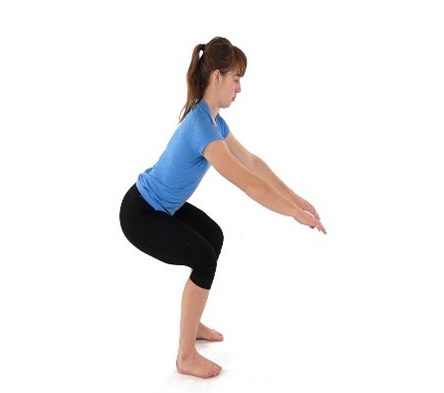
Exercise 1 - Squats
Stand tall with your feet shoulder width apart and your weight even on both feet.
Squat down by sitting back and bring your arms forward.
Push back up through the heels, slowly and with control.
+ To make this harder, pause in a squat position and hold for 3 seconds
– To make this easier, hold a chair for
Exercise 2 - balance and stretching
Stand on your affected leg for balance and stretch your non affected leg.
If your flexibility allows in your affected leg stretch your affected leg and stand on your not affected leg.
Use a chair for support
+ to make this harder, close your eyes to challenge your balance

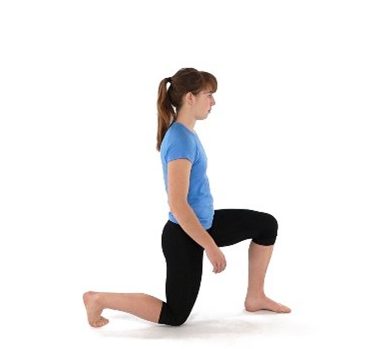
Exercise 3 - Single Plane Lunge
Stand with feet hip width apart.
Take a step forward and bend the front knee.
Stand back up pushing through your heel and bring your front foot back to the starting position.
+ To make this harder, bend the front knee further so that your rear knee moves closer to the floor.
– To make this easier, hold on to a hand rail or chair for support.
Exercise 4 : Marching on Spot
Stand tall with your feet hip width apart and your weight even on both feet. March in place.
+ To make this harder, increase the speed of the march or the height of your knees
– To make this easier, reduce the speed of the march or the height of your knees
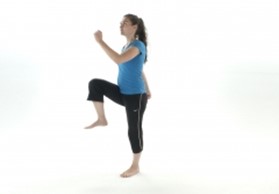

Exercise 5 : Multi-directional Lunge
Stand with feet hip width apart.
Take a step forward and bend the front knee.
Stand back up pushing through your heel and bring your front foot back to the starting position and repeat by placing your in different directions as guided by your therapist
+ To make this harder, increase the directions or add a small weight
– To make this easier, weight, single plane only
Exercise 6 - Jump and Land
Place feet hips width apart and slightly bend your knees and jump so your feet leave the ground.
Land on slightly soft bend knees in a squat position
+Jump slightly higher /change of plane
-Jump slightly lower
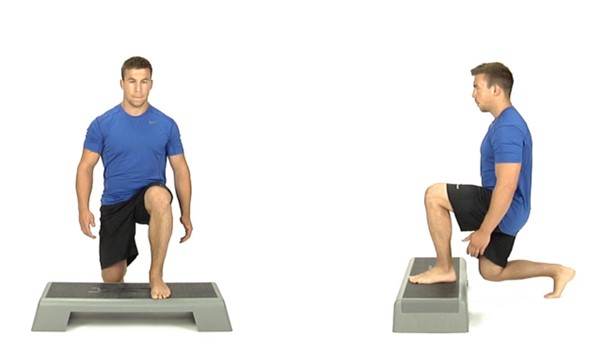
Exercise 7 - Lunge on step
Place your affected leg on a step and you run affected leg behind you
Place hands by side or on your hips and control your knee bending to a comfortable position and return back to the starting position
+ Add weights in your hands
-Reduce weights and do not lunge as far down
Exercise 8: Single leg lateral jumps
Stand on your affected leg and hop forwards. Concentrate on keeping your balance and landing on a slightly soft, bent knee.
+ Go forwards, backwards or diagonal
-Continue forwards only in a straight line

Physical activity reduces the chances of major illness
The importance of being active
NHS guidleines recommend the following:
- 150mins moderate intensity exercise a week
- 30mins x 5 = Weekly recommended activity
- Moderate intensity = any exercise that elevates the heart/ breathing rate to a point where you can still hold a conversation 75mins of intense exercise a week
- 15mins x 5 = Weekly recommended activity
- Intense exercise = any exercise that elevates heart rate
Physical benefits include
- Energy levels increased
- Increased physical strength
- Completing longer walks
- Grants you some more ability to do more things that you may enjoy Decreases chance of developing OA by 83%
Mental benefits include
- Stimulates Release of dopamine and serotonin
- Improving mood
- Reduces Stress
- Improves sleep – Serotonin has been shown to be assistive with sleep regulation
- Better digestion – Lower Serotonin presence in the gut is found to correlate with constipation
- Health is a state of complete physical, mental and social well-being and not merely the absence of disease or infirmity”. WHO
Vita is an award-winning, CQC registered healthcare provider





